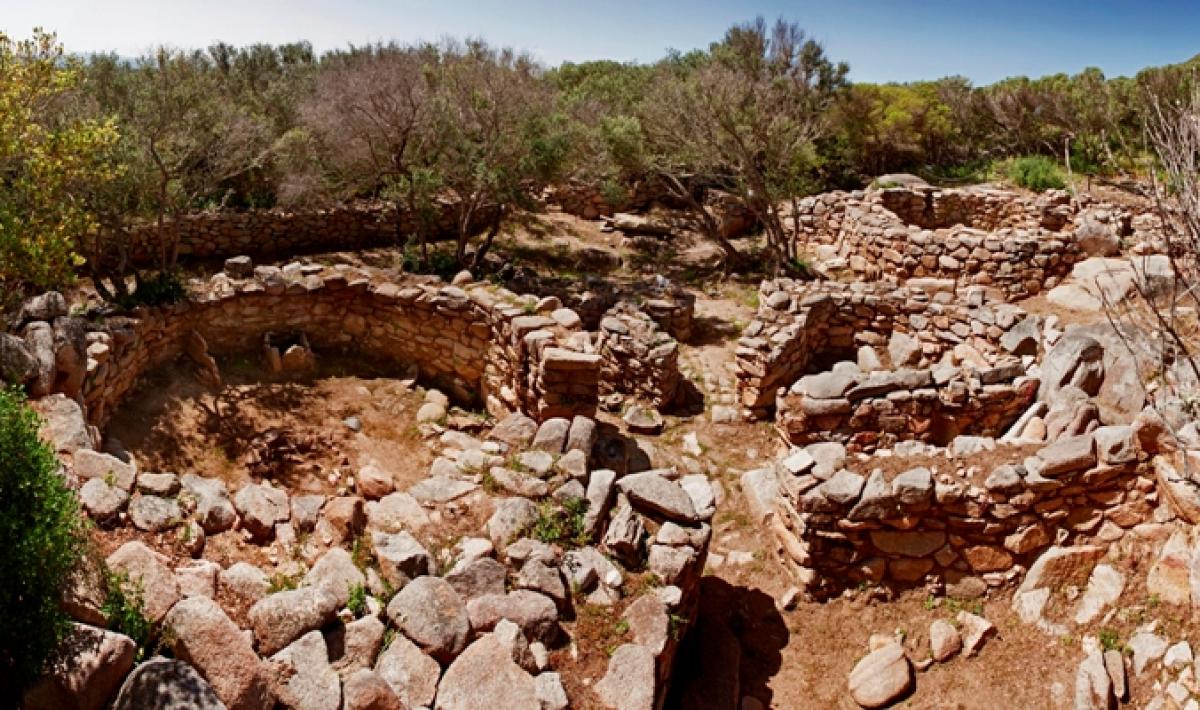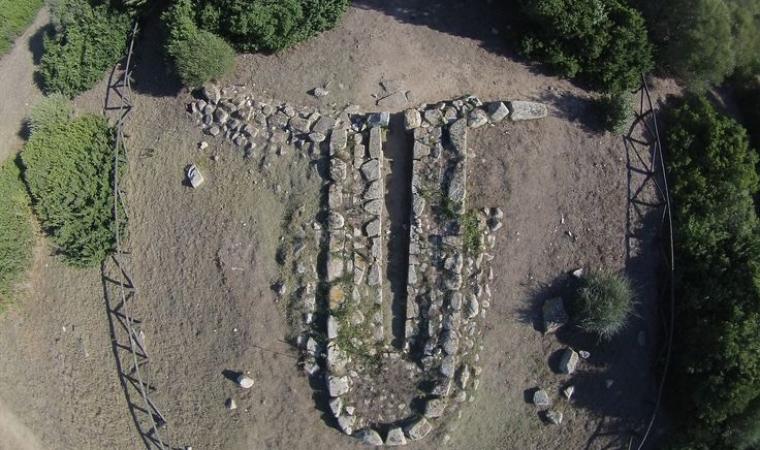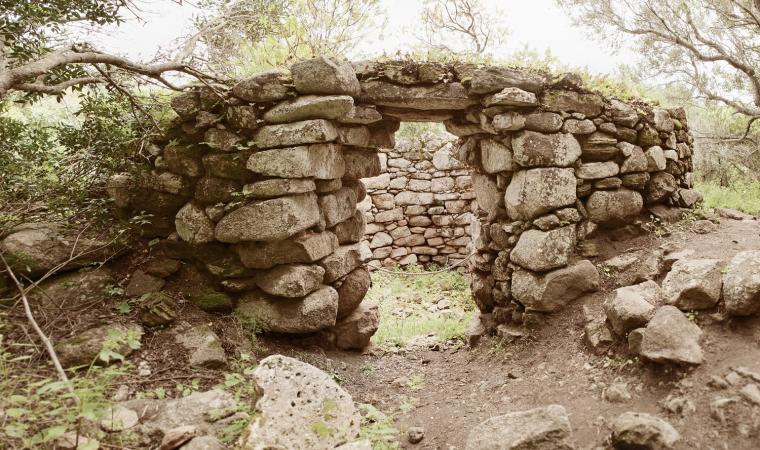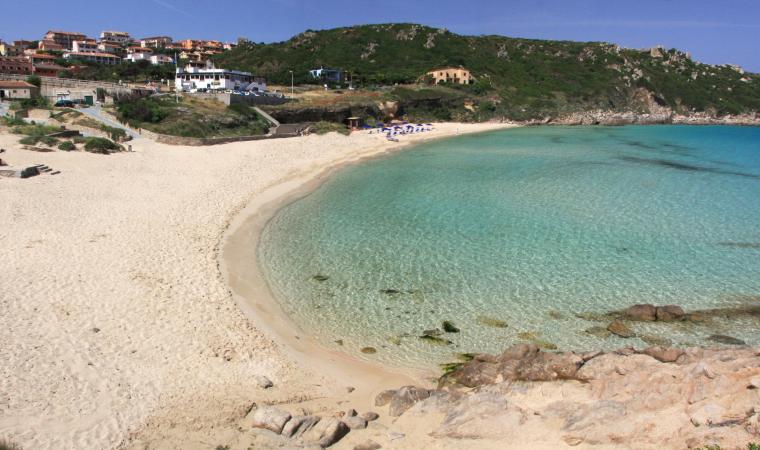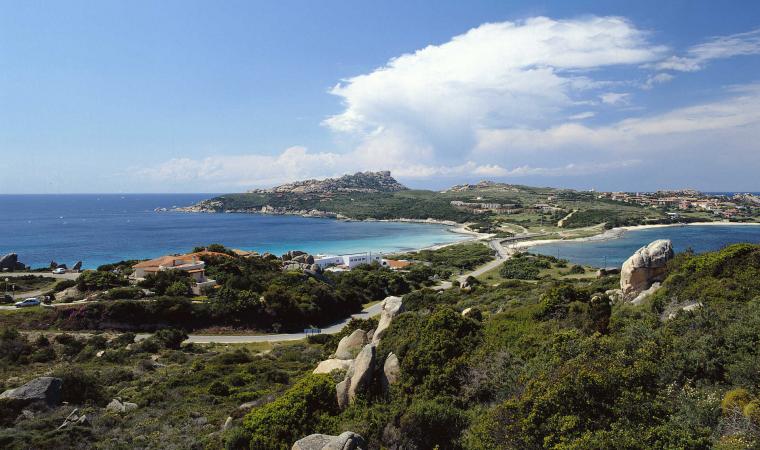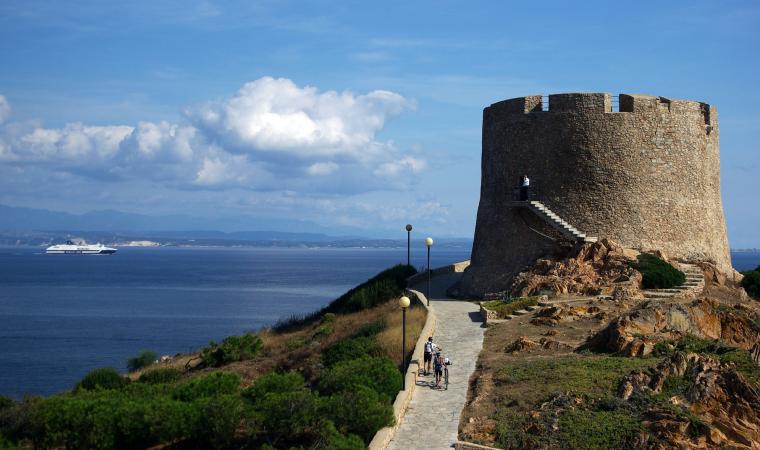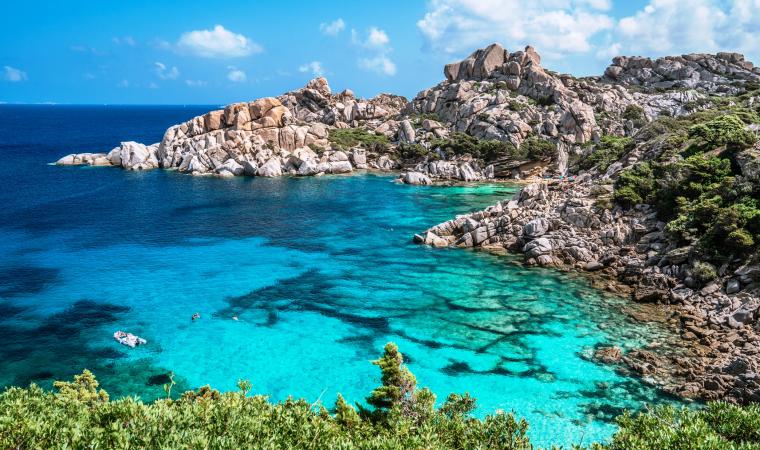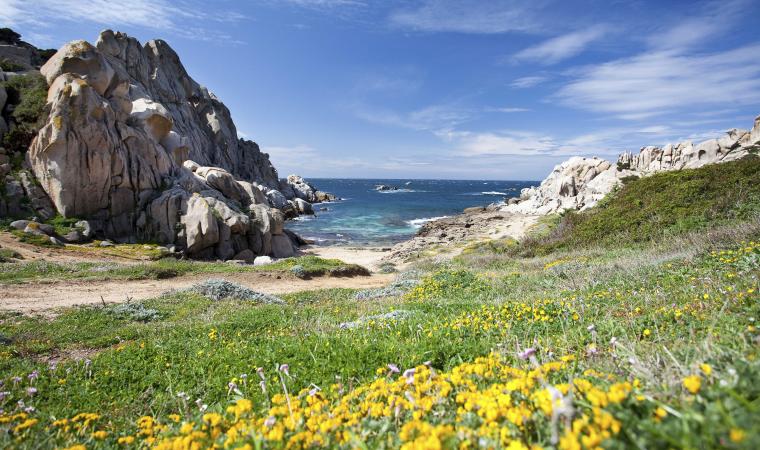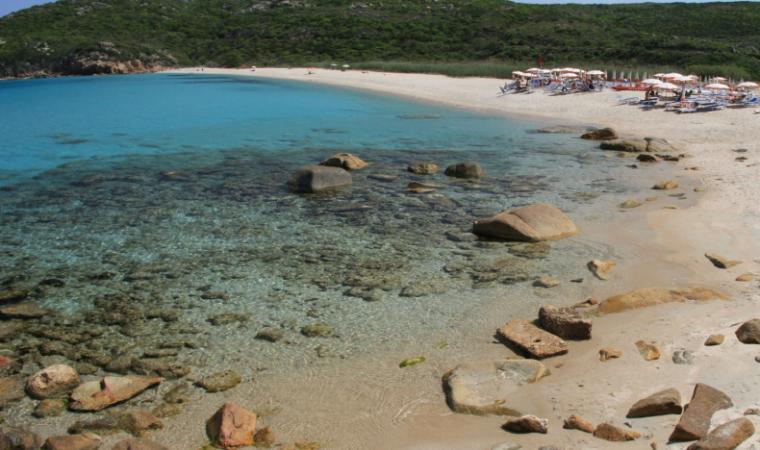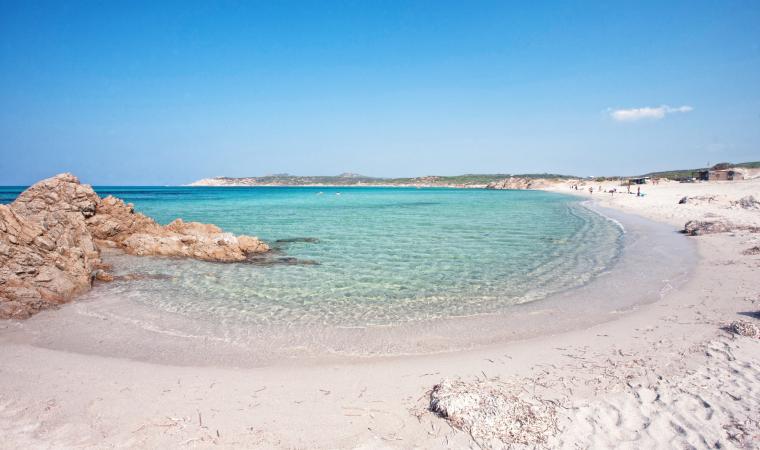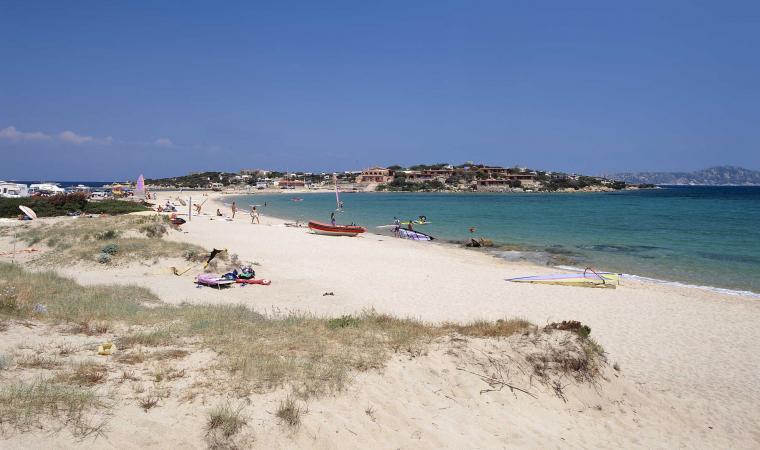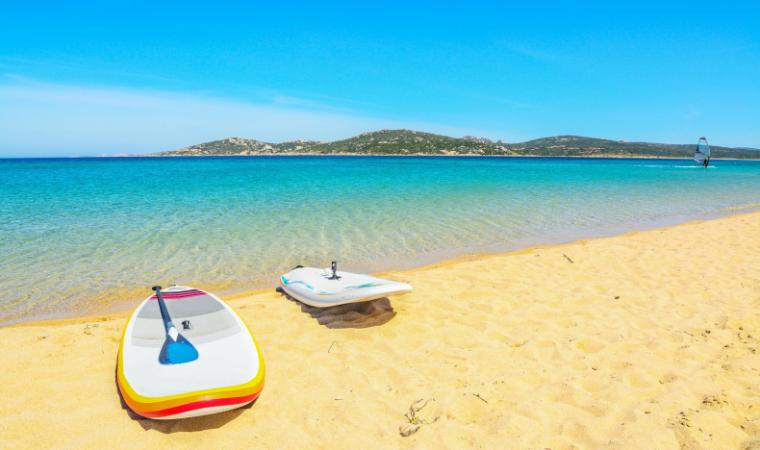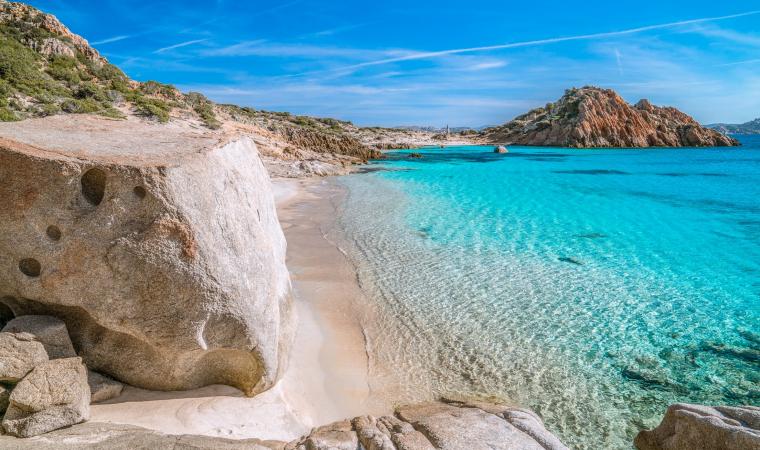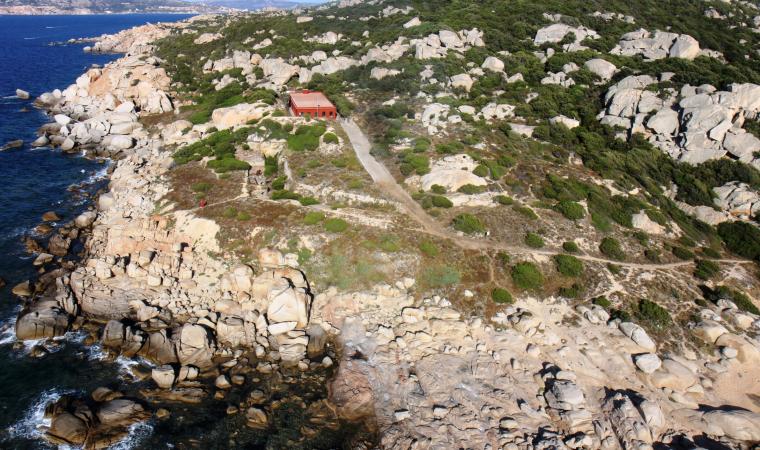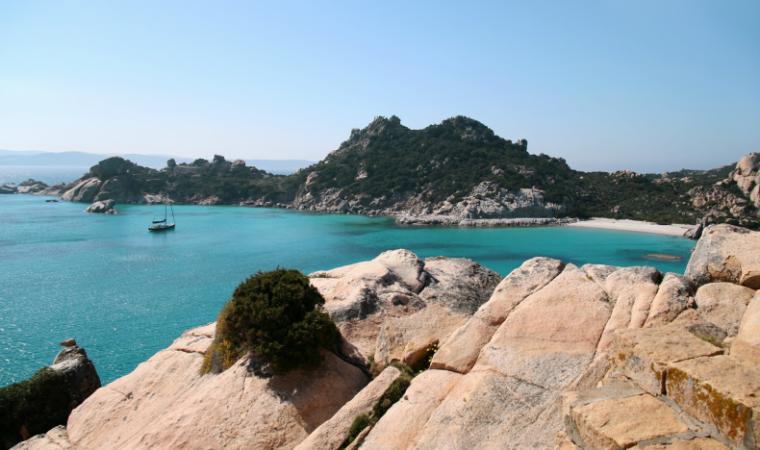A short distance from the sea, on a granite promontory in Santa Teresa Gallura, the Nuragic civilisation has left some of its most fascinating traces, revealing its intimate daily and spiritual aspects. In the archaeological complex of di Lu Brandali you will travel through time, amidst the houses, ‘workshops’, defensive and funeral buildings of a past that dates back to between the 14th and 10th century BC. The evidence of a distant past stretches along the slopes of the promontory, surrounded by lush Mediterranean scrub. On the top, stretching over staggered levels to take advantage of the rocky formation, stands a nuraghe featuring mixed architectural elements, both ‘corridor-type’ and ‘ tholos-type’: it has a keep surrounded by a secondary defence wall with two towers, one of which was used as a furnace in the centuries that followed.
Close to the fortified area, along the slope and on the plain south-east of the nuraghe, you will visit the remains of the village. The huts, generally with a curvilinear layout, also took advantage of the landform. The walls were made of blocks positioned using the row technique and connected by mud mortar, while the floors were made of rammed earth and, in some cases, there were also rock benches. You will notice the traces of different superimposed walls: the rooms were subjected to restructuring and reorganisation of the spaces, with the addition of rooms used as artisan ‘workshops’. The huts, often built in small clusters and separated by narrow corridors, were not the only type of housing solution: to the west you will, in fact, come to the area of the tafoni, which contribute to the charm of Lu Brandali. A passage between the rocks leads to a group of granite caves, used by the villagers both as shelters and for burials.
A few dozen metres from the site, in the portion of the complex further downstream, there is a Tomb of Giants: you can guess how majestic it must have once been from the size of the still visible foundations. The tomb corridor is more than six metres long and ends in an apse shape, the flooring is made of flat slabs in front of the entrance to the exedra and in cobblestone in the remaining space, while two jambs, on which an architrave originally rested, delimit the entrance. Here, thousands of years ago, occult and mysterious ceremonies took place, in which worshippers and priests ate ritual meals and smashed ceramic containers on the ground, as shown by the numerous finds unearthed during the excavations.
After a visit to the daily life of the past, the magnificent sea of Santa Teresa awaits you: moving towards the promontory-peninsula of Capo Testa you will come across the splendid beaches of Rena di Ponente and Rena di Levante; in the western part of the cape, you cannot miss the charm of Cala Grande-Valle della Luna. A short distance from the main village square is the bay of Rena Bianca, a city beach with soft, very white sand, with the imposing Tower of Longonsardo watching over it from above. The tower was built in the 16th century by order of King Philip II and protected against pirate raids. Today it is a symbol of the town and a captivating location where you can admire the spectacular sunsets.

